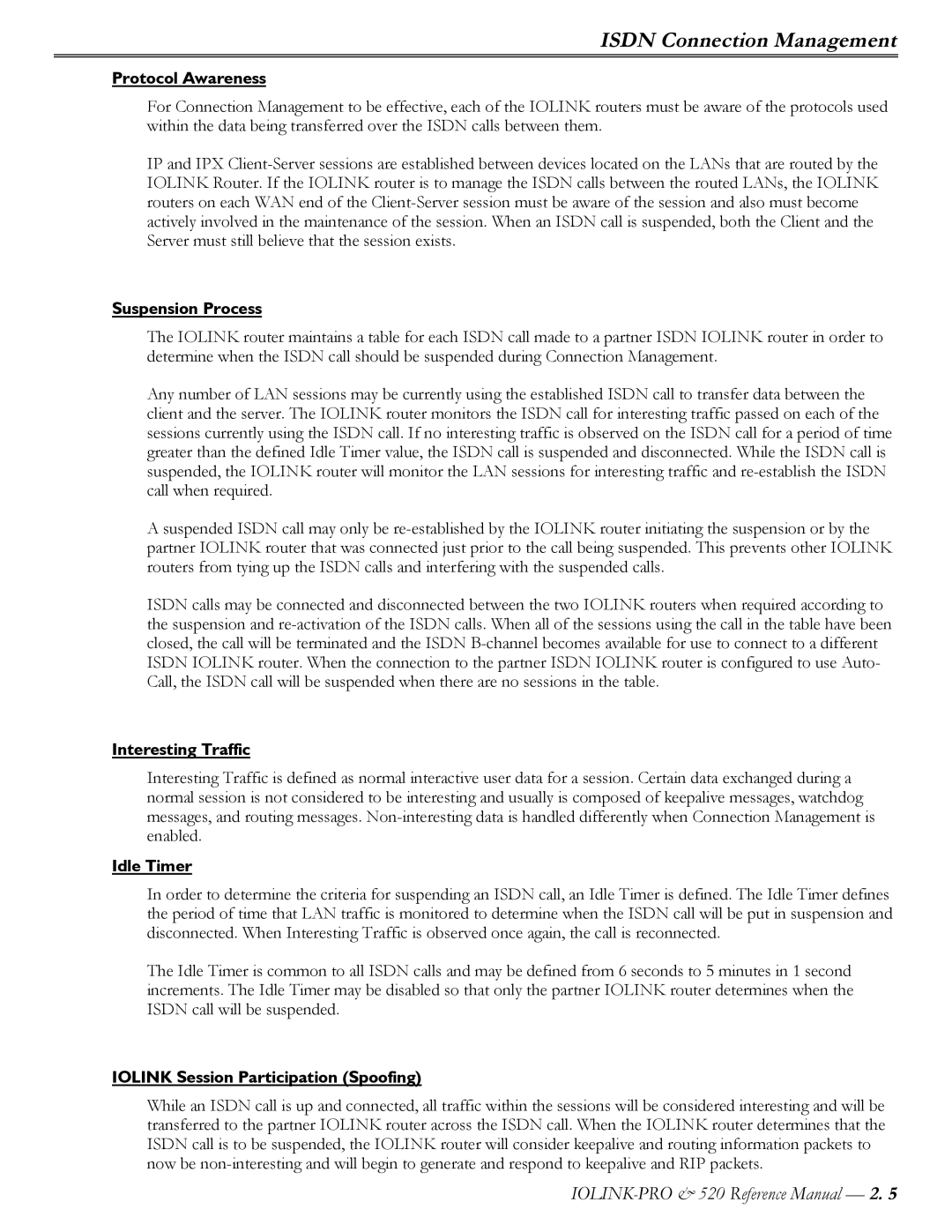ISDN Connection Management
Protocol Awareness
For Connection Management to be effective, each of the IOLINK routers must be aware of the protocols used within the data being transferred over the ISDN calls between them.
IP and IPX
Suspension Process
The IOLINK router maintains a table for each ISDN call made to a partner ISDN IOLINK router in order to determine when the ISDN call should be suspended during Connection Management.
Any number of LAN sessions may be currently using the established ISDN call to transfer data between the client and the server. The IOLINK router monitors the ISDN call for interesting traffic passed on each of the sessions currently using the ISDN call. If no interesting traffic is observed on the ISDN call for a period of time greater than the defined Idle Timer value, the ISDN call is suspended and disconnected. While the ISDN call is suspended, the IOLINK router will monitor the LAN sessions for interesting traffic and
A suspended ISDN call may only be
ISDN calls may be connected and disconnected between the two IOLINK routers when required according to the suspension and
Interesting Traffic
Interesting Traffic is defined as normal interactive user data for a session. Certain data exchanged during a normal session is not considered to be interesting and usually is composed of keepalive messages, watchdog messages, and routing messages.
Idle Timer
In order to determine the criteria for suspending an ISDN call, an Idle Timer is defined. The Idle Timer defines the period of time that LAN traffic is monitored to determine when the ISDN call will be put in suspension and disconnected. When Interesting Traffic is observed once again, the call is reconnected.
The Idle Timer is common to all ISDN calls and may be defined from 6 seconds to 5 minutes in 1 second increments. The Idle Timer may be disabled so that only the partner IOLINK router determines when the ISDN call will be suspended.
IOLINK Session Participation (Spoofing)
While an ISDN call is up and connected, all traffic within the sessions will be considered interesting and will be transferred to the partner IOLINK router across the ISDN call. When the IOLINK router determines that the ISDN call is to be suspended, the IOLINK router will consider keepalive and routing information packets to now be
